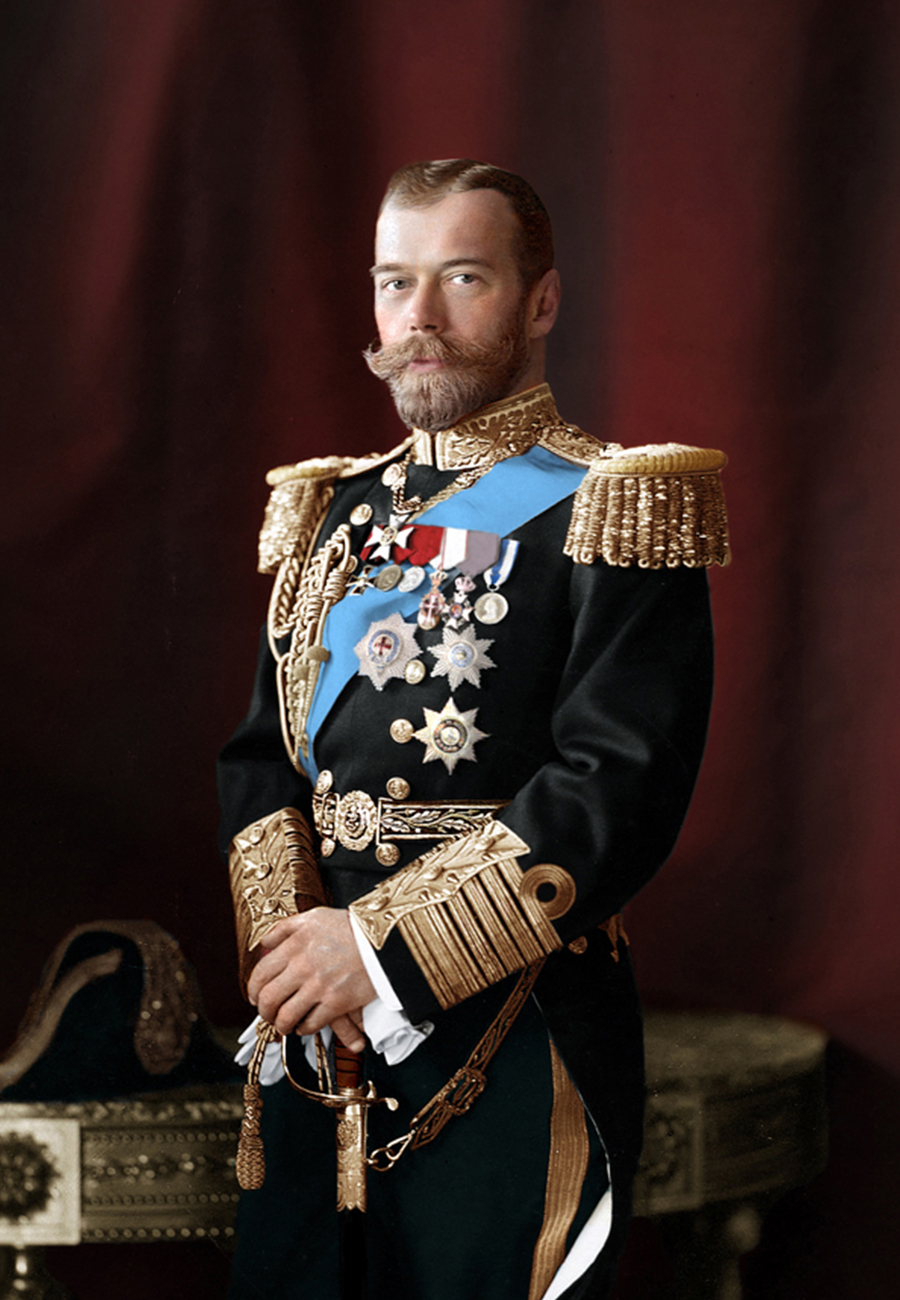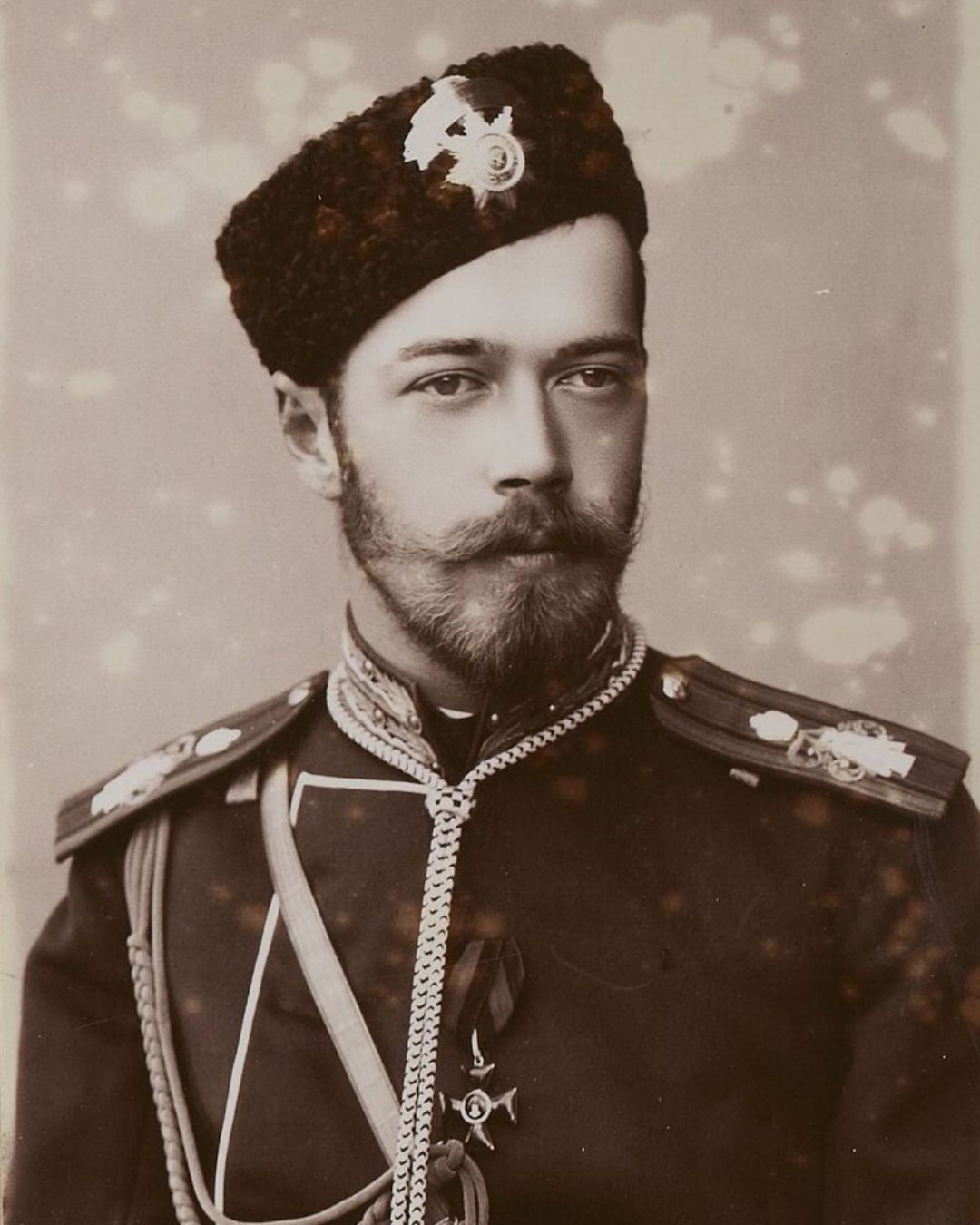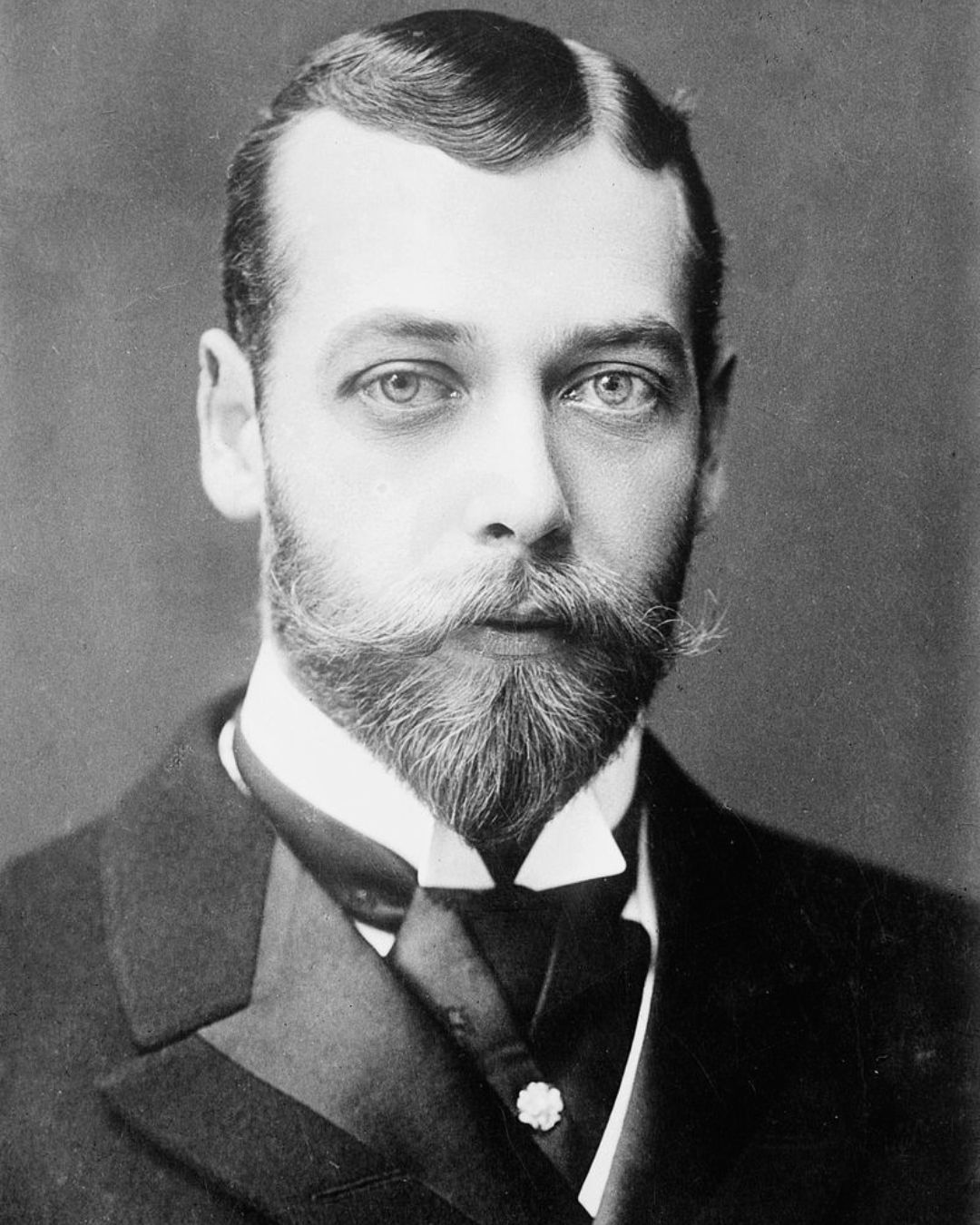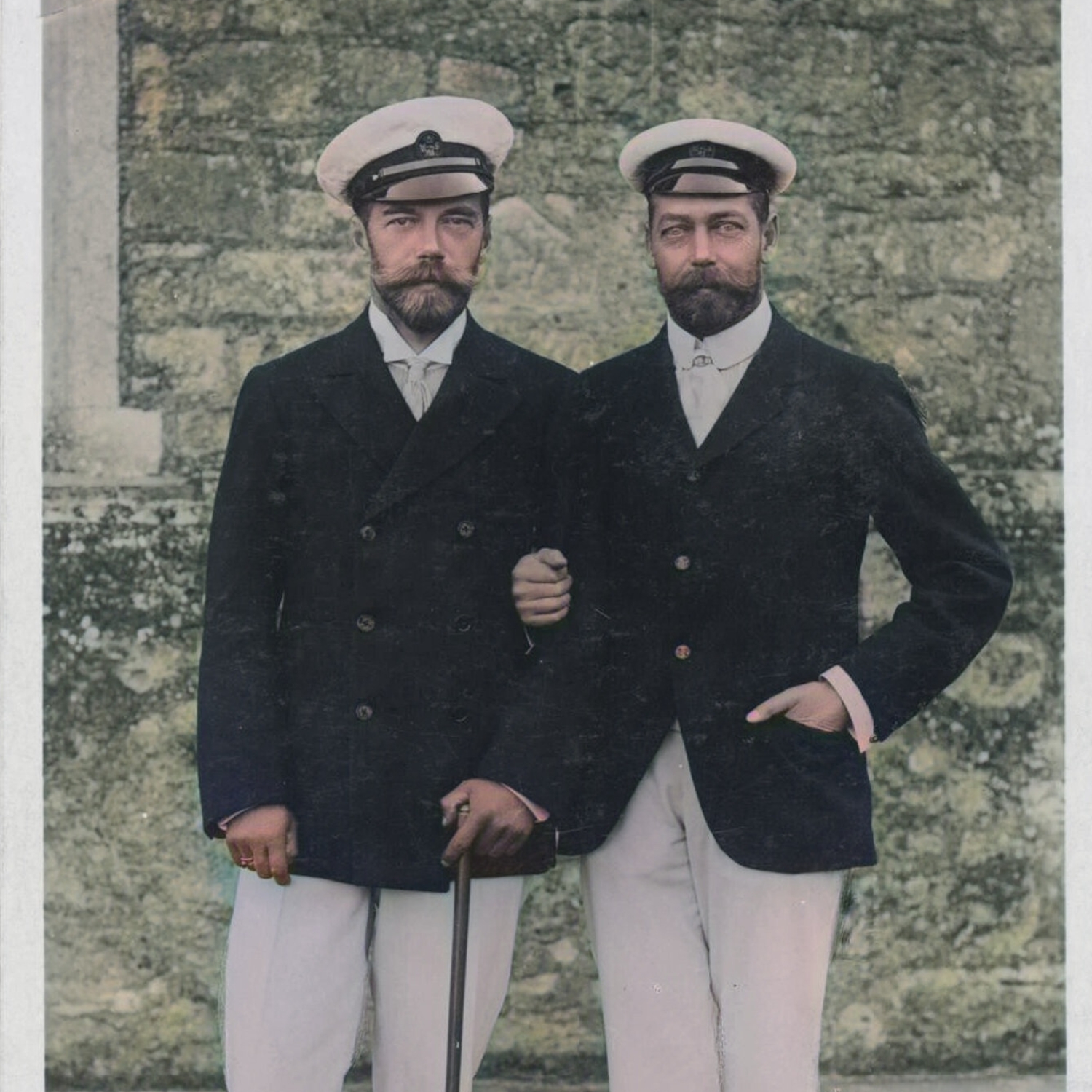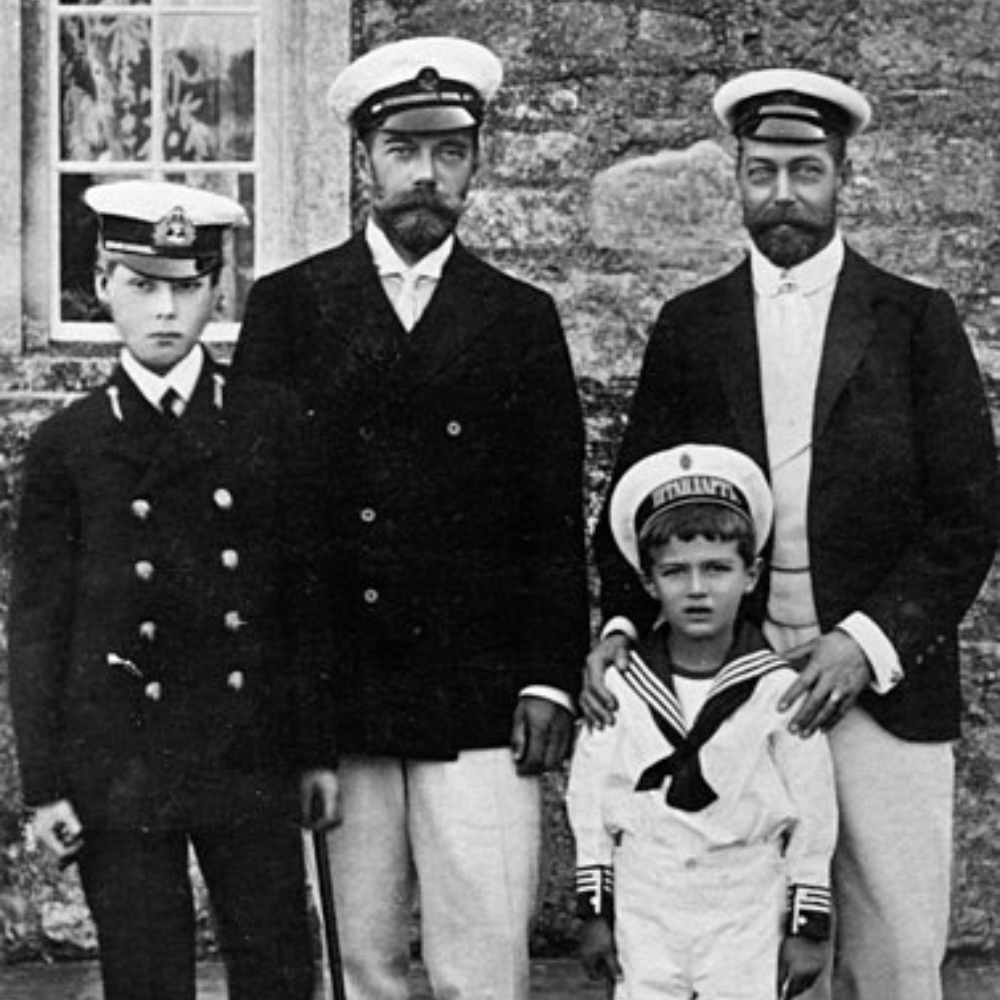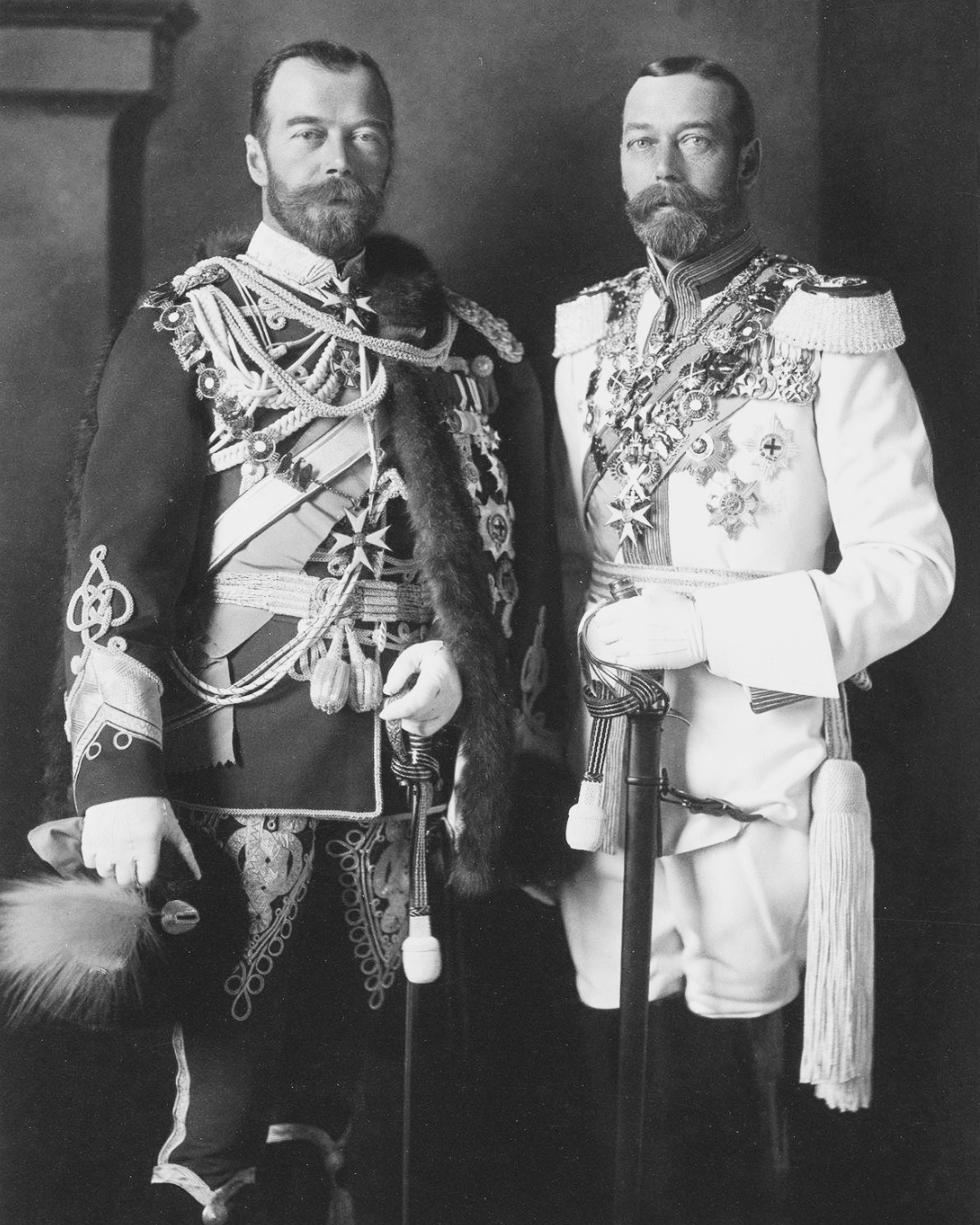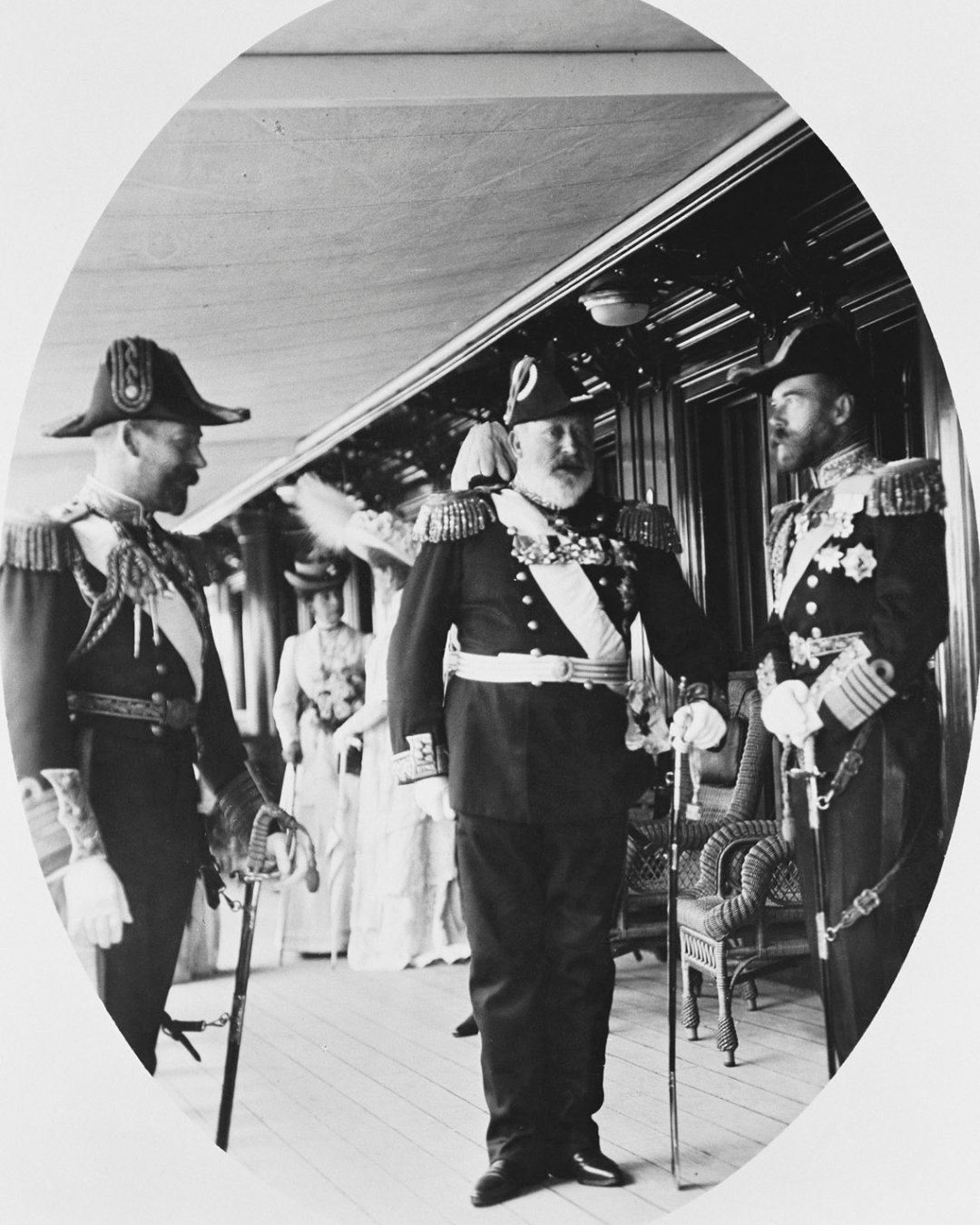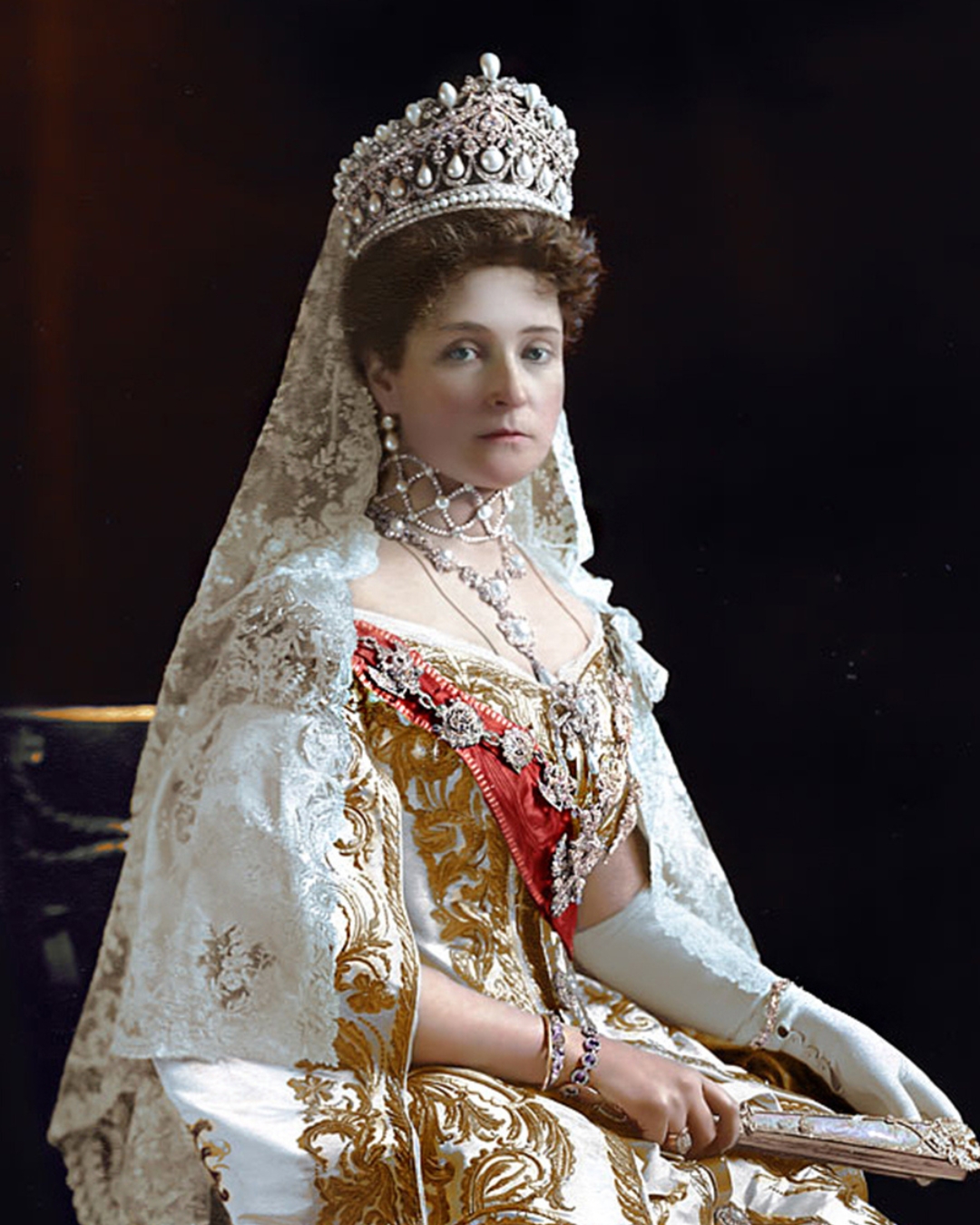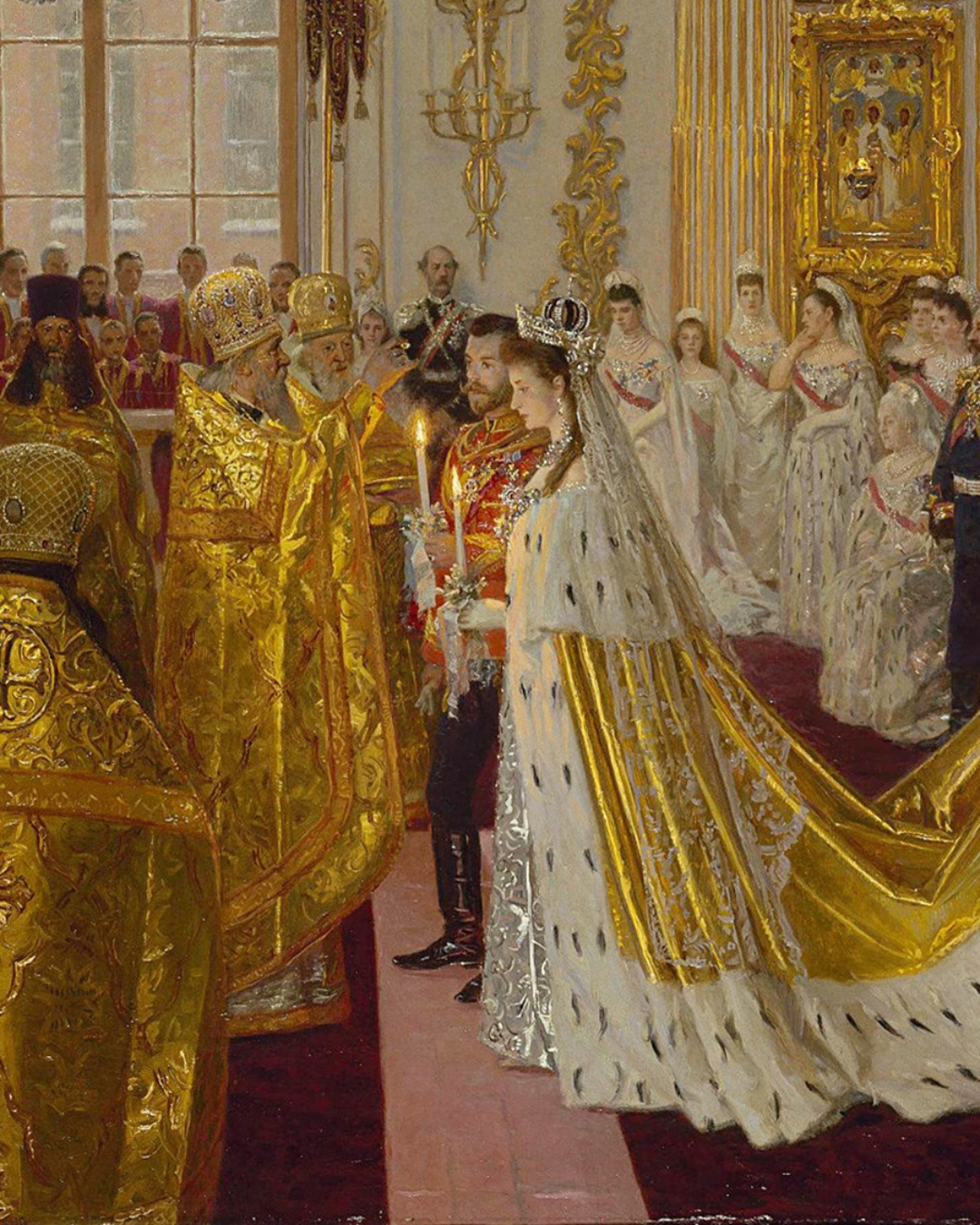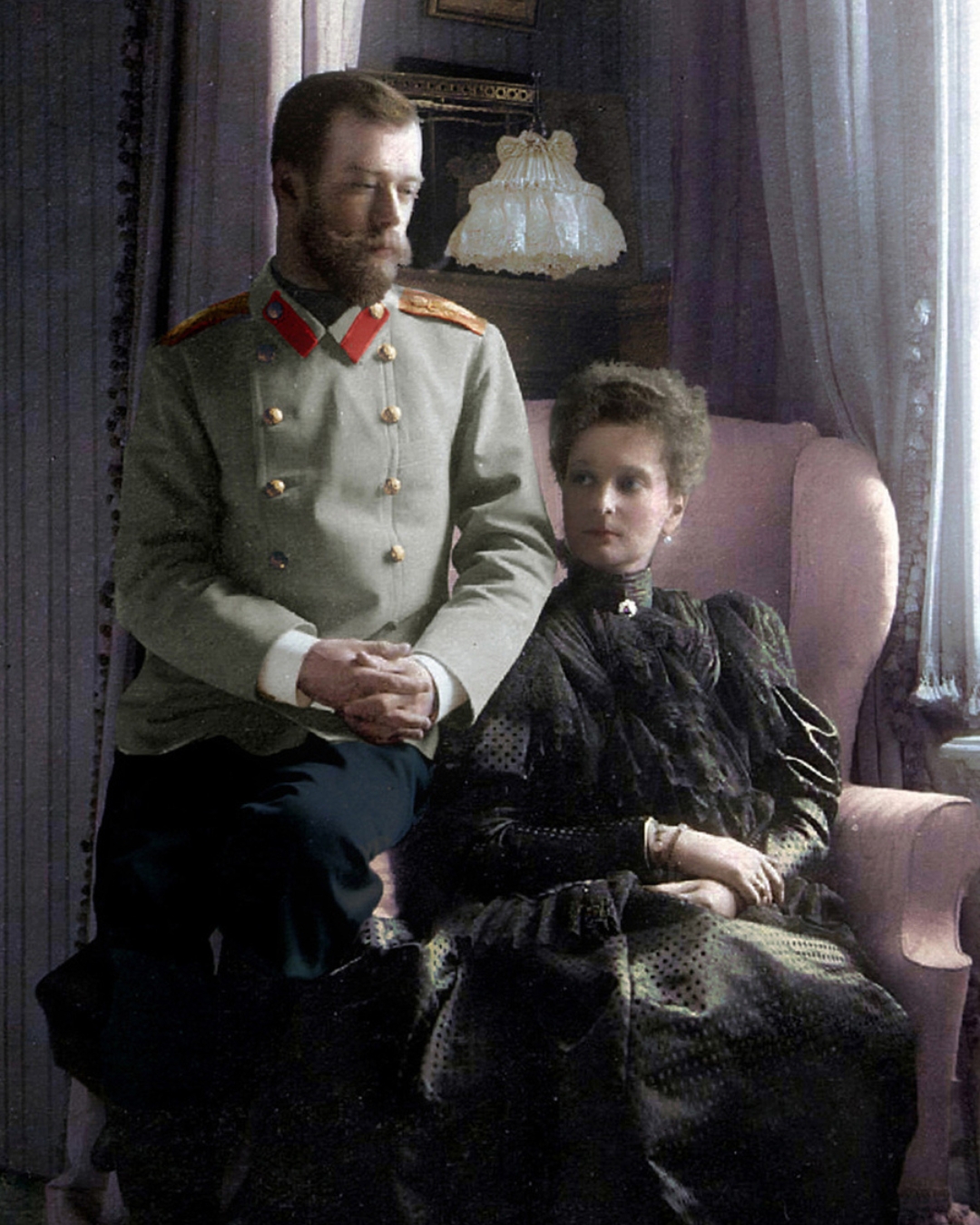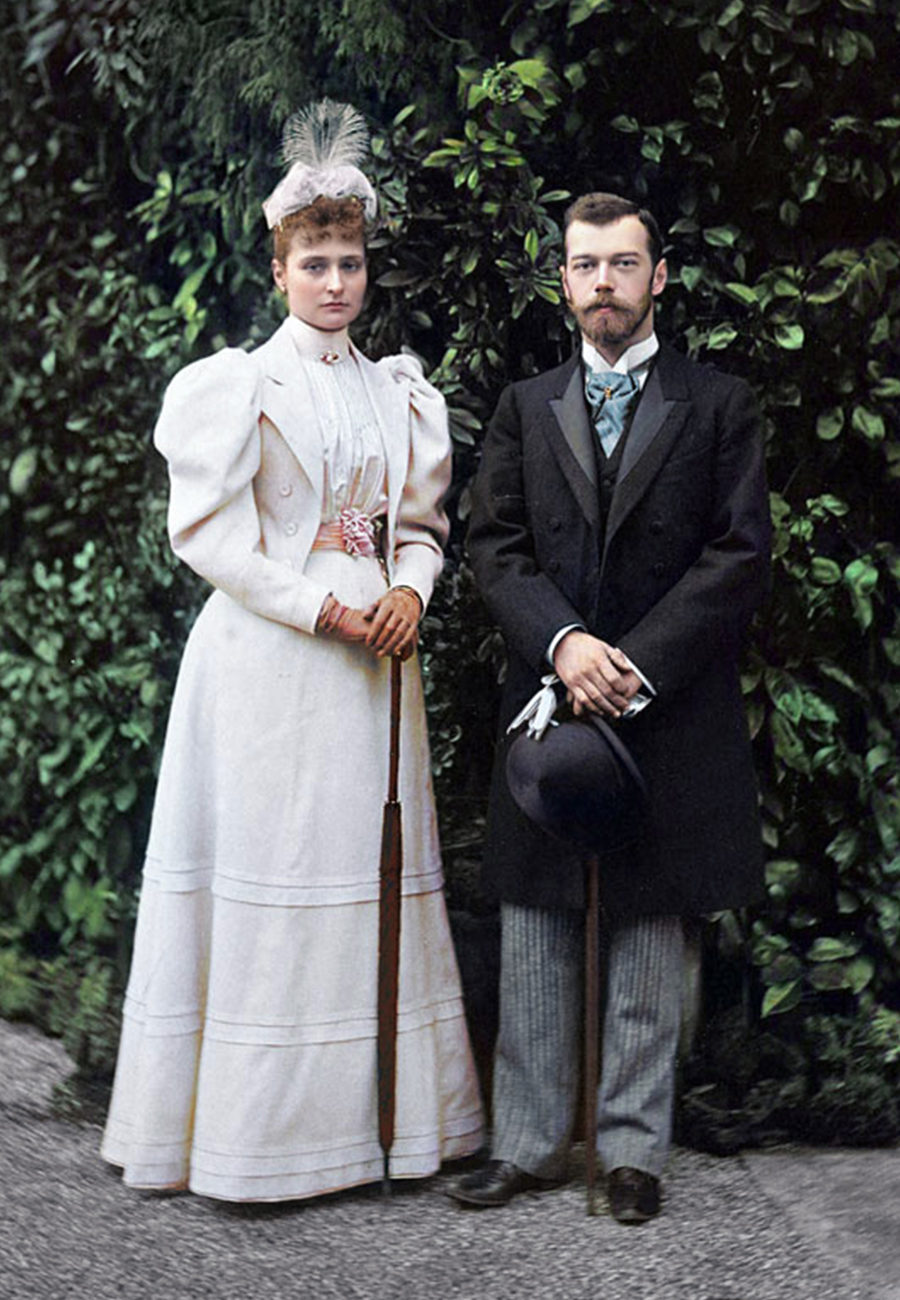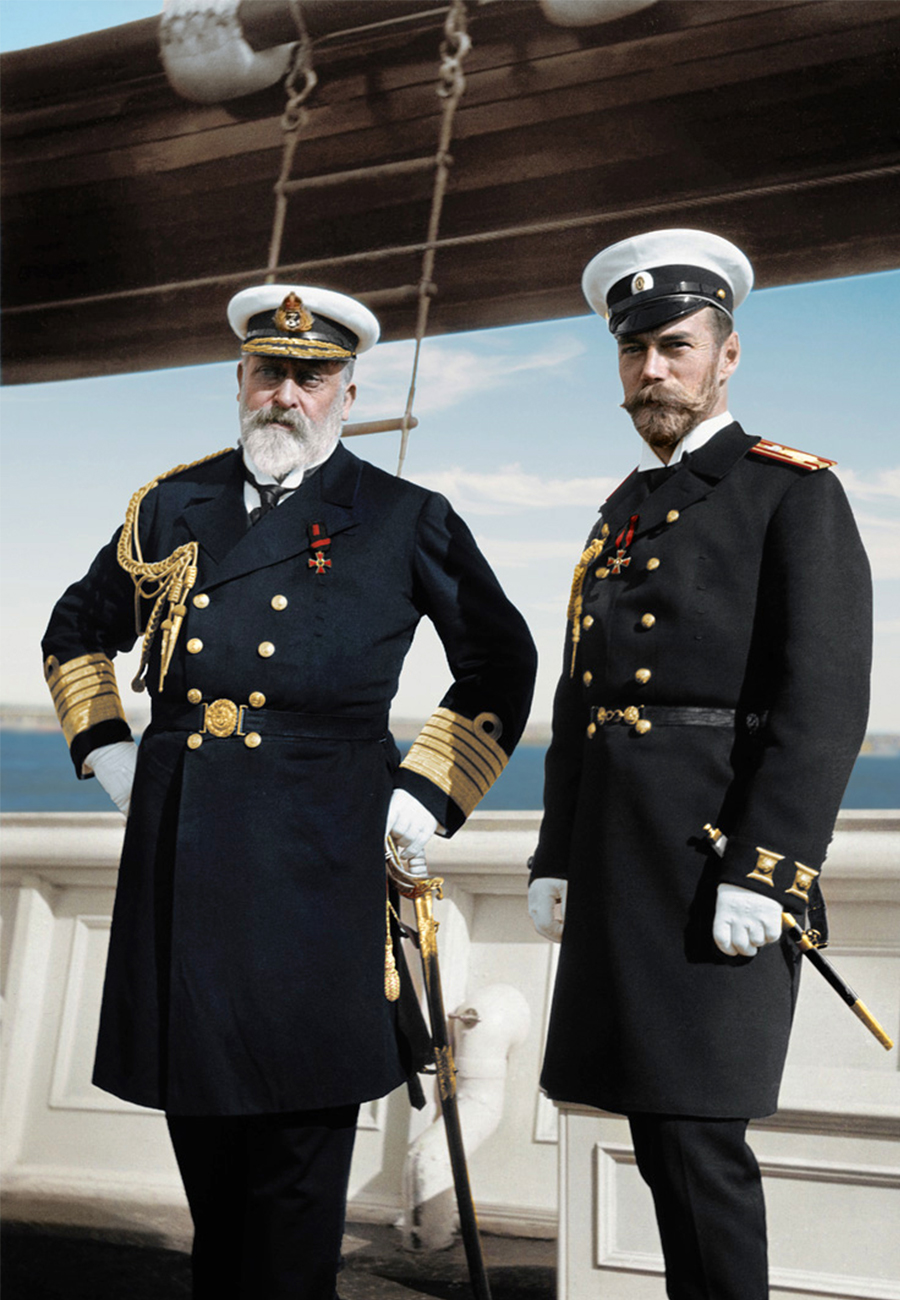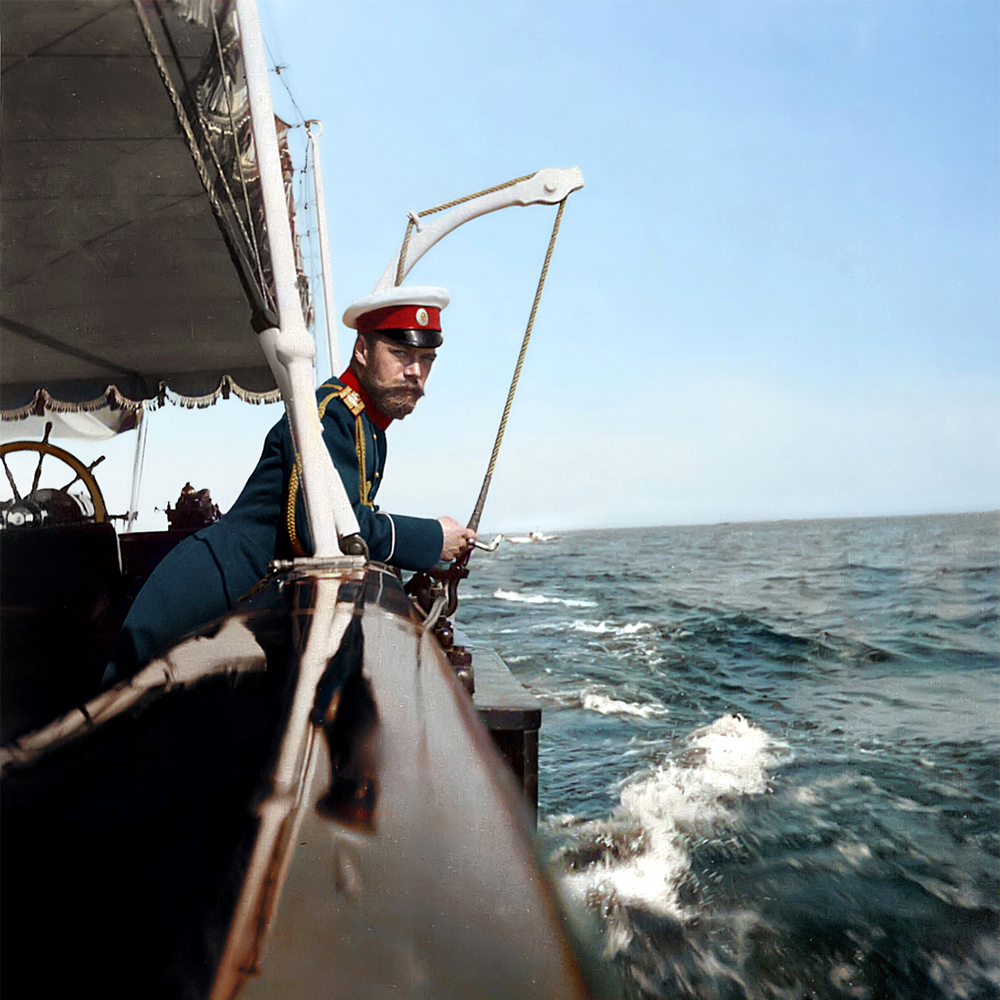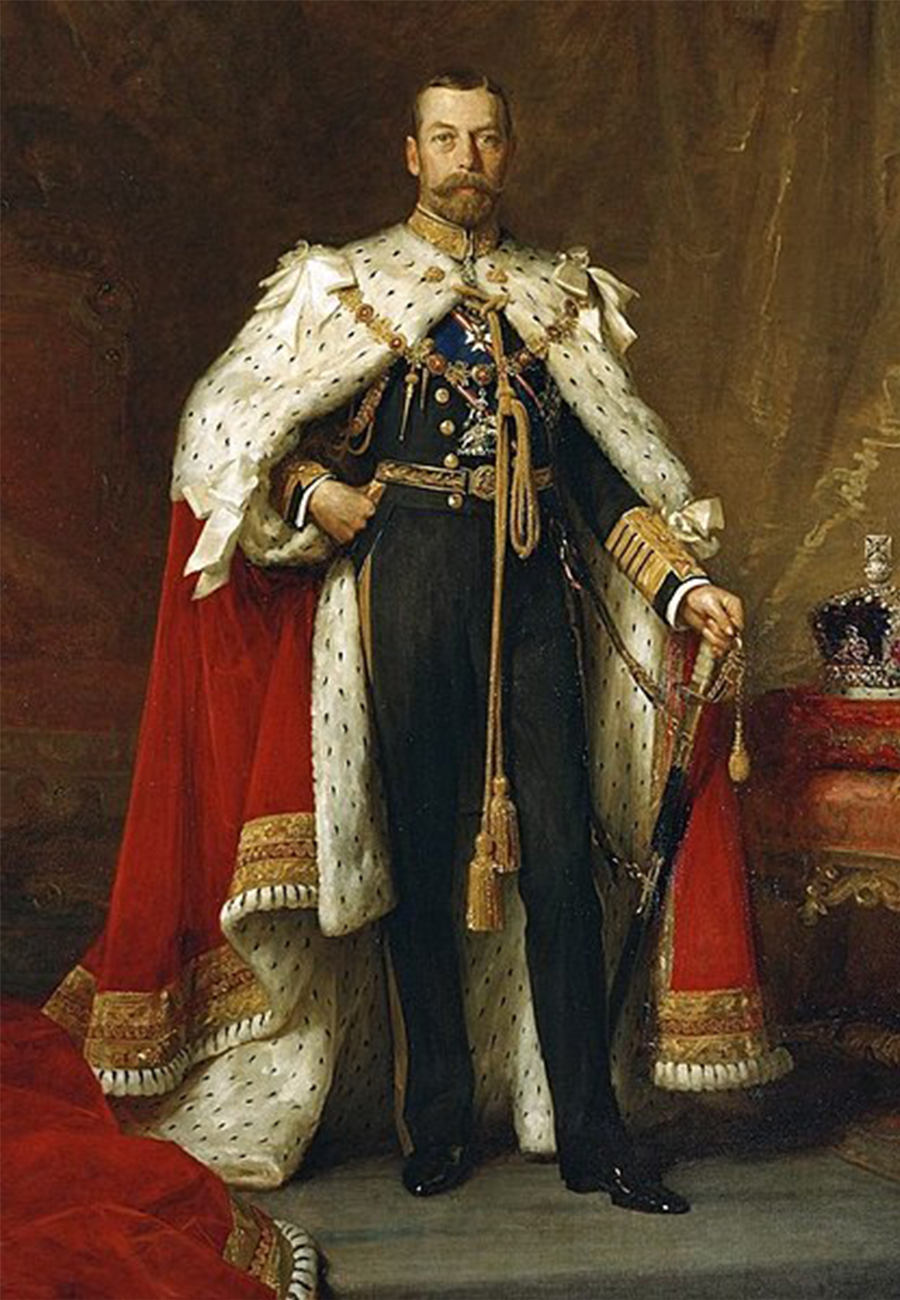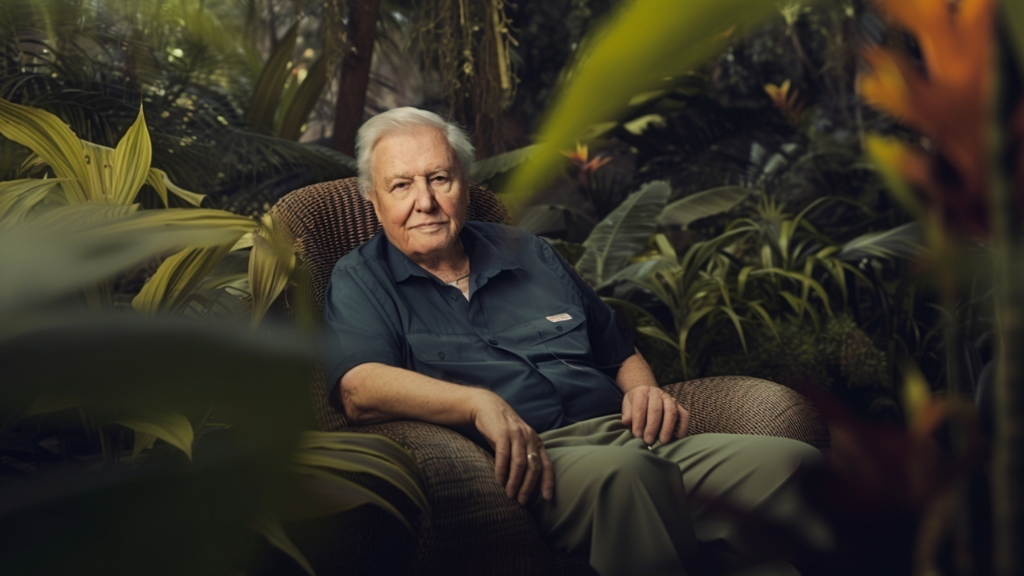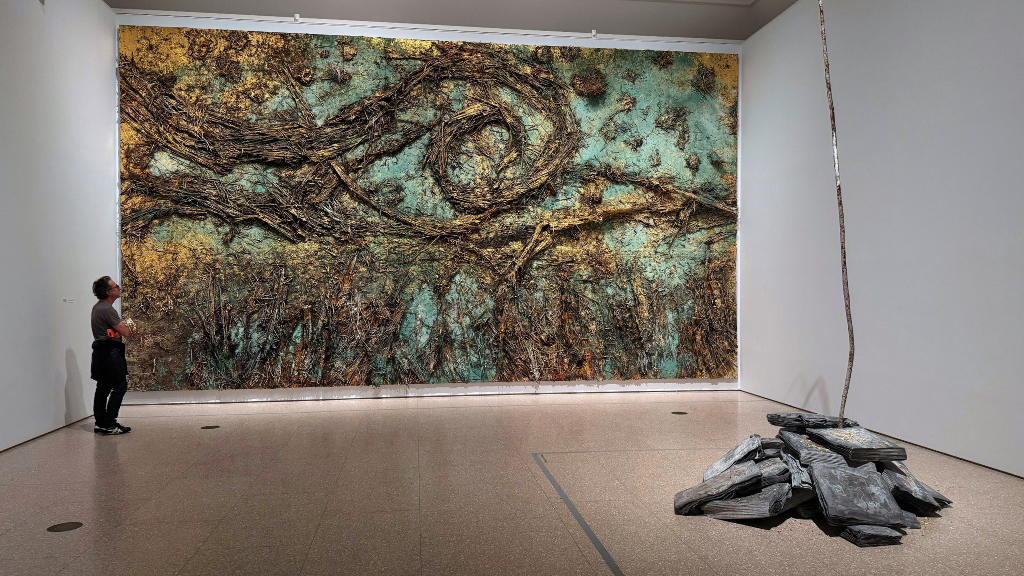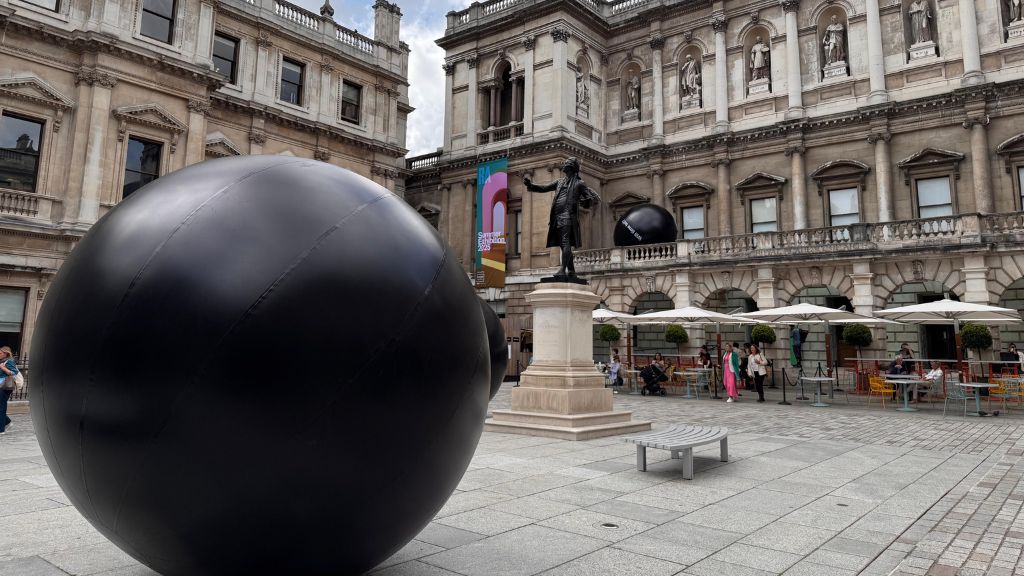
Nicholas II and George V: A History of Friendship and Duty
History knows many examples of people, who looked quite similar to each other, but the Russian Emperor Nicholas II and the British King George V are a special case. They were so alike that one could mistake them for twins; however, they were only cousins. Two monarchs maintained a friendly relationship until the events of 1917 in Russia forced one of them to choose between personal interests and the needs of his country. Afisha.London magazine examines the family ties between the last Emperor of Russia and the King of Great Britain, paying special attention to the personal relationship the two royal cousins had.
Why Did They Look So Alike?
George was older – the grandson of Queen Victoria was born on 3 June 1865 to the Prince and Princess of Wales at Marlborough House, a laconic mansion on Pall Mall in the heart of London. During the joint reign of Queen Victoria and Prince Albert, the mansion was known as the Royal College of Art, but later it was occupied by George’s parents – the future King Edward VII and his wife Princess Alexandra of Denmark.
Three years later, in 1868, Tsarevich Nicholas, who then became Emperor Nicholas II, was born in Tsarskoe Selo in the Russian Empire. His parents were Alexander III and Empress Maria Feodorovna, nee Princess Dagmar of Denmark, daughter of King Christian and Queen Louise of Denmark.
- George V. Photo: Colour by Klimbim
- Nicholas II. Photo: Colour by Klimbim
Maria Feodorovna and Princess Alexandra were sisters, which explains the striking resemblance shared by their sons, who were united not only by blood but also by common interests, which developed due to the absence of an age gap and the similarity in the cousins’ temperaments. The only difference was that from the first days of his life Nicholas was raised as the heir to the throne of the Russian Empire, while George was only third in line to the British throne.
George and Nicholas became friends as children – they spent their summer holidays in their mothers’ homeland in Denmark. Both boys were shy and submissive to outside influences, as they grew up with demanding fathers and strict discipline. Since childhood, Tsarevich Nicholas was accustomed to getting up early, splashing himself with cold water and exercising. He received an extensive education, knew four languages, studied legal law and military affairs, which he loved very much.
Read more: How Composer Dimitri Tiomkin Conquered Hollywood
Prince George also received naval education and from the age of 12, together with his older brother Albert, was enlisted as a cadet on HMS Britannia, which became a training platform for future admirals and explorers of the deep seas. George had rather poor health, and his parents decided that serving in the navy would benefit him. On the ship, the Prince obeyed the same rules as all the other crew members: he got up at 5 in the morning, was content with modest food and worked all day. After three years of study, the Prince continued to serve in the Royal Navy.
In total, he spent 14 years at sea – he visited India, Africa, Canada and Australia. Despite the fact that George later graduated from the Royal Naval College in Greenwich, for the sailors he remained one of their own: a simple and democratic young man.
- Young Nicholas II. Photo: Bibliothèque nationale de France, Public domain, via Wikimedia Commons
- Young George V. Photo: Bain News Service, publisher, Public domain, via Wikimedia Commons
The Weddings of the Tsarevich and the Prince
In 1892, George’s elder brother Albert died from flu, so the Prince became second in line to the throne and was given the title of Duke of York by his grandmother, Queen Victoria. That was when George’s life started to become more and more interesting: the imperious grandmother found him a bride, but not just anyone – her choice fell on Mary of Teck, the fiancée of his late brother Albert. The serious and reasonable girl appealed to the Queen, but Mary herself was at first opposed to the idea of marrying George. The Prince also did not want this wedding, as he believed that he was still too young to marry. However, at the behest of his grandmother, he proposed to Mary and was refused.
Read more: The last Stroganov: how Hélène de Ludinghausen revived a lost Russian legacy
- Nicholas II and Prince George (future King George V). Photo: © National Portrait Gallery
- Tsesarevich Alexei, Nicholas II, Prince Edward and Prince George (future King George V) at Osborne House. Photo: Arthur William Debenham, Public domain, via Wikimedia Commons
Meanwhile, the whole country was looking forward to the long-awaited engagement, and the newspapers speculated on the topic, encouraging the young couple to tie the knot. After much deliberation, Mary accepted the second proposal from George, and on 6 July 1893, they got married in the Royal Chapel of St. James’s Palace. Mary of Teck’s wedding dress, which was covered in intricate orange blossom embroidery, can now be seen on display at Kensington Palace.
- The Duke and Duchess of York on their wedding day. Photo: © Royal Collection Trust
- King George V and Queen Mary at Buckingham Palace (March 13, 1914). Photo: © Royal Collection Trust
Queen Victoria hit the bull’s-eye – George and Mary became a strong and happy couple, and the princess supported her husband in public affairs. Tsarevich Nicholas was also present at this wedding as a guest of honour, and a year later he became the godfather of their first son, Edward.
In November 1894, it was George’s turn to attend his cousin’s wedding. There are historical accounts, which indicate that while George was in St. Petersburg, the Prince was often mistaken for the young Emperor. Eyewitnesses claim that the amazing resemblance shared by the cousins led to many funny situations: even their own mothers confused the two. Nicholas and George only added to the fun: they wore same beards and hairstyles and loved to dress in the same clothes – only the most attentive noticed that George was a little slimmer and had a more piercing and tense look.
Read more: What to see in London this summer: top exhibitions
- Nicholas II and George V. Photo: © Royal Collection Trust
- Edward VII, Prince of Wales (future King George V), and Nicholas II on the deck of an imperial yacht during the annual regatta in Cowes (1909). Photo: CE von Hahn & Co, Public domain, via Wikimedia Commons
On the eve of the wedding, which was held in the Great Church of the Winter Palace, Nicholas had a lot of difficulties, since the ceremony took place immediately after the funeral of his father, Emperor Alexander III, who ordered his son to get married as soon as possible. As his life companion, the Tsarevich chose Princess Alix of Hesse, the granddaughter of Queen Victoria, with whom he had long shared sincere feelings.
However, Maria Feodorovna considered the German princess not the best choice for her son. Queen Victoria was also against this marriage, as she did not want to send her favourite Alix to autocratic and, therefore, dangerous Russia. Nevertheless, after talking with Nicholas in person, the Queen changed her mind – he made the most pleasant impression on her. Although, Victoria’s fears were later justified: the fate of the Russian Emperor and Alix, who became Empress Aleksandra Feodorovna, was indeed tragic.
Read more: Charlie Chaplin: A ‘Communist’ and a Favourite of the Soviet Public
- Aleksandra Fedorovna (1907). Photo: Color by Klimbim
- The wedding ceremony of Nicholas II and Grand Duchess Aleksandra Feodorovna. Photo: Grove, W.H. (174, Brompton Road), Public domain, via Wikimedia Commons
Why do Prince Harry and Nicholas II Have the Same Uniform?
At the end of summer of 1896, Nicholas II and his wife went on a tour of European countries in order to build new political relations. After visiting Paris, Vienna and Copenhagen, the royal couple headed towards Great Britain. Although, the political nature of the visit was classified, perhaps not to provoke unrest in the country due to the conflict in the Ottoman Empire, which agitated the whole world.
- Nicholas II and Aleksandra Feodorovna (1899). Photo: Color by Klimbim
- Nicholas II and Aleksandra Feodorovna (1908). Photo: Color by Klimbim
The Times assured the public that the visit of the Russian Emperor was personal in nature, but The Daily News openly expressed hope that the arrival of Nicholas II and achievement of mutual understanding with St. Petersburg would be able to resolve the Eastern problem, which required decisive measures against the Turkish government.
In her notes, Victoria wrote how glad she was to see Nicholas and Alix again, but in personal correspondence with George she was worried about the sudden death of Russian Foreign Minister, Alexei Lobanov-Rostovsky, as it threatened to affect the country’s politics. Nicholas arrived in Great Britain with the new Foreign Minister and stopped at Balmoral, which unexpectedly became the centre of political negotiations.
Read more: Joseph Brodsky in London: from Soviet outcast to professor at the West’s top universities
- Nicholas II and Aleksandra Feodorovna in Coburg (1894). Photo: Colour by Klimbim
- Nicholas II with the father of George V, King Edward VII. Photo: Colour by Klimbim
The only remaining accounts of the September meeting in Balmoral are Victoria’s notes and documents from the personal archives of the British Foreign Secretary, Lord Salisbury, who was present at the negotiations, which were labelled ‘Top Secret’. In her diary, the Queen noted that it is very important for the United Kingdom and Russia to be a united force, for they are the two most powerful empires in the world and, therefore, can be a guarantee of peace. It is generally believed that the negotiations in Balmoral did not yield any results, since Nicholas II was interested in maintaining the status quo in Turkey. Nevertheless, certain political agreements were reached, and Russian-British relations were strengthened.
At that time, the amiable exchange of orders and military ranks was par for the course, so in 1908 Nicholas received the highest rank in the Royal Navy – Admiral of the Fleet; while in 1915, he became a Field Marshal, which is the highest rank in the British Army. Interestingly, Prince Harry wore the same uniform that is seen on Nicholas II on one of the photographs to his wedding in 2018 — the Full Dress Uniform of the Royal Scots Dragoon Guards. In 1894, Queen Victoria made a gift for the wedding of Nicholas and Alix, appointing the young Emperor as Colonel-in-Chief of this regiment.
Read more: Boris Anrep in London: A Don Juan and the Love of Anna Akhmatova
- Nicholas II in the Full Dress Uniform of the Royal Scots Dragoon Guards (1896). Photo: © Royal Collection Trust
- Nicholas II in the Full Colonel’s Dress Uniform of the Royal Scots Dragoon Guards (1896). Photo: © Royal Collection Trust
The Difficult Choice
However, the February Revolution of 1917 completely changed the balance of power, and a month later Nicholas II signed his abdication. In personal correspondence between Nicholas and his cousin, who by that time had become king, George assured the Emperor that he would receive him with his family. Thus, by 23 March, the British Ambassador to Russia, George Buchanan, notified the Provisional Government that King George, with the consent of the ministers, offers the Emperor and Empress hospitality on British territory. The head of the Provisional Government, Aleksandr Kerensky, later assured, that the Tsar and his family were indeed supposed to be sent through Murmansk to London, but no one expected the situation to change so dramatically.
Read more: Serge Lifar: reformer of the Paris Opera, the protégé of Sergei Diaghilev, and friend of Coco Chanel
- Nicholas II. Photo: Color by Klimbim
- Nicholas II in the Alexander Palace park while on house arrest (June 1917). Photo: Color by Klimbim
The commission of inquiry announced that during a search in the personal archive of Nicholas II, documents were found testifying to the ties of the Tsar and Tsarina with the enemy (meaning Germany), although, as historians now claim, in fact there were no such papers. The ancestry of his wife, a German princess, whom many considered a spy and an accomplice of Germany, also did not speak in favour of Nicholas.
Public unrest and information about ‘treason’ committed by the Emperor reached Great Britain – it was published by many newspapers, including The Daily Telegraph. According to Roman Sokolov, a well-known Doctor of Historical Sciences in Russia, the British authorities feared that the arrival of the former Russian emperor would cause a wave of protests not only among representatives of the left forces, but also among subjects loyal to the King.
Read more: The Life of Sergei Rachmaninoff and His Visits to the UK
- Luke Fields – George V in his coronation robes (1911). Photo: © Royal Collection Trust
- Nicholas II. Photo: Colour by Klimbim
Under pressure from the public and ministers, George V was forced to withdraw his invitation. And although George did not manage to help Nicholas – we all know the tragic fate of the Russian Imperial family – in 1919, he sent HMS Marlborough to Crimea to pick up his Danish aunt, Dowager Empress Maria Feodorovna, and Nicholas’ sisters, Princesses Xenia and Olga, with their families. Also, in the context of the anti-German sentiments of the First World War, on 17 July 1917, George established the House of Windsor to replace the Saxe-Coburg-Gotha dynasty. King Charles III is the fifth monarch of the Windsor dynasty.
George ruled until his death in 1936: during this time, Great Britain completely changed its political landscape, surviving fascism, Irish republicanism and India’s movement for independence. And Marlborough House in London, where began the life of one of the most controversial monarchs in Great Britain, can now be visited by appointment as part of a tourist group.
Irina Latsio/ Margarita Bagrova
Cover photo: Nicolas II of Russia and George V of Great Britain (© Royal Collection Trust)
Read more:
Roma Liberov. Russian Emigration a Hundred Years Ago and Now: What Unites the Two Generations?
SUBSCRIBE
Receive our digest once a week with quality Russian events and articles


